44 reading food labels diabetes
Eat Well | Living with Diabetes | Diabetes | CDC Eat Well. Managing blood sugar is the key to living well with diabetes, and eating well is the key to managing blood sugar. But what does it mean to eat well? Simply put, eat healthy foods in the right amounts at the right times so your blood sugar stays in your target range as much as possible. Work with your dietitian or diabetes educator to ... 6 Tips for Eating Out with Diabetes - Point of Blue Keep hidden sugars in mind when reading the menu as well. Red-flag words 2 include: BBQ Glazed Sticky Honey Teriyaki If a dish has one of those words in it, ask for more details about how it is made. Or think about having a smaller portion. 5. Remember that sharing is caring.2
Blood glucose monitors: What factors affect accuracy ... - Mayo Clinic Consider these factors that affect meter accuracy and the steps to resolve or prevent the problem: Factors that affect accuracy. Solutions. Test strip problems. Throw out damaged or outdated test strips. Store strips in their sealed container; keep them away from moisture and humidity. Be sure the strips are meant for your specific glucose meter.
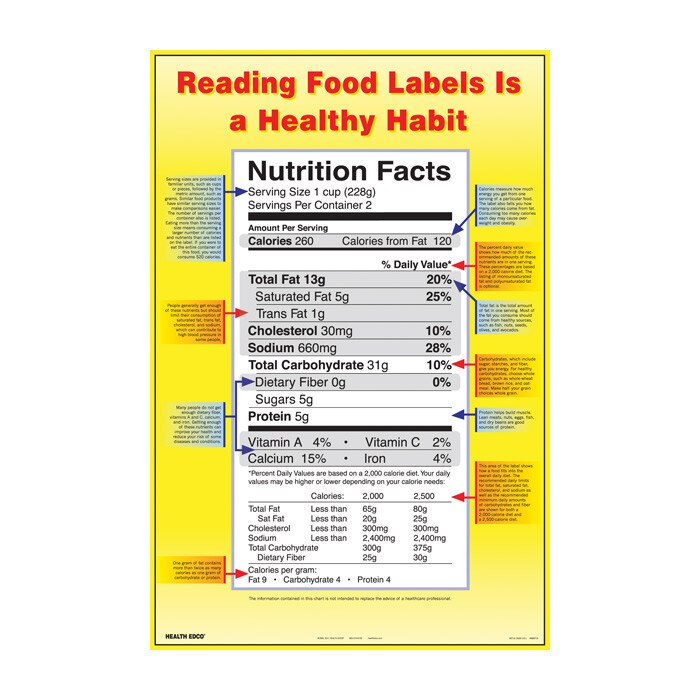
Reading food labels diabetes
Type 2 diabetes food list: What to eat and avoid Experts advise people avoid packaged and fast foods, sugary snacks, and white bread, pasta, and rice. Wholemeal versions are often a good alternative. Some people find it helpful to make a ... How to Tell If Foods Are Low or High Cholesterol - Verywell Health Each food label should include milligrams (mg) of cholesterol per serving. Don't forget to look at the serving size as well. Sometimes products can seem low in cholesterol, but if you eat more than the recommended servings at one sitting, then you can end up consuming a lot more cholesterol than you intended. How to Read a Nutrition Facts Label - Everyday Health Lower sodium limit Food labels reflect the new, slightly lower RDA of 2,300 milligrams (mg) per day (down from 2,400 mg per day). How to Read a Nutrition Facts Label First, know that, as the label...
Reading food labels diabetes. Healthful Eating with Diabetes - Academy of Nutrition and Dietetics Brown rice, buckwheat, oatmeal, whole-wheat breads and cereals are good sources of fiber. Eat less fat. Choose lean meats, poultry and fish whenever possible. Bake, broil, roast, grill, boil or steam foods instead of frying. Also, choose low-fat or fat-free dairy products. Enjoy meatless meals by swapping out meat for lentils or tofu. Cut the salt. Diabetes and "Net Carbs" - Diabetes Everyday Eye Catching Food Labels. You may see " net carbs " or words like "impact carbs" on the front or back of a food label. The food will have fiber, and that is a good thing. Fiber is helpful in slowing down the absorption of carbohydrates to help minimize spikes in blood sugar after eating. The fiber portion of this story is a good thing ... › understanding-food-labelsUnderstanding food labels | Diabetes UK Labels on the front don’t include the amount of carbs, so check the label on the pack for the total carbohydrate, which includes carbohydrates from starchy food as well as sugars. The figures for sugars on traffic lights are for total sugars, which doesn’t tell you how much of the sugar comes from natural sources, such as fructose and how much is added, such as sucrose or glucose. Reading a Nutrition Label When You Have Diabetes and Kidney Disease Diet labels are customary on packaged meals. They allow you to perceive what nutritional vitamins, minerals, and different vitamins are within the meals. Sunday, June 26, 2022. Stop Diabetes No Result . View All Result ...
› making-sense-food-labelsMaking Sense of Food Labels | ADA - American Diabetes Association Reading labels can help you find these hidden sources and compare the sodium in different foods. Whether you have diabetes or not, 2300 milligrams (mg) or less per day is the general recommendation. If you have high blood pressure, talk with your health care team to find out the best goal for you. List of ingredients › reading-food-labelsReading Food Labels | ADA - American Diabetes Association The Nutrition Facts labels on foods are really the key to making the best choices. We’ll cover the basics so that these labels make shopping easier for you. You’ve heard it all. From carb-free to low-carb, to whole and empty carbs, it’s hard to know what it all means. Blood sugar highs and lows aren’t always easy to understand. How To Read Food and Beverage Labels | National Institute on Aging Read the nutrition label as a whole to determine how a particular food or drink fits into your healthy eating pattern . Is lower % DV always healthier? If a food has 5% DV or less of a nutrient per serving, it is considered low in that nutrient. If it has 20% DV or more of a nutrient per serving, it is considered high in that nutrient. Managing Type 2 Diabetes For Dummies Cheat Sheet Reading food labels is a vital skill for anyone who counts carbohydrates. To find the amount of carbohydrates in your foods, follow these steps: Look for the line that reads "Total Carbohydrate" on the label.The value on this line will tell you how many grams of carbohydrates are in one serving of the food.
Diabetic Living: How To Read Labels Rightly - Healthyavid Here are some terms on the label and their meaning; 6) Low Fat It means no more than 3g of fat per serving for individual foods, and no more than 30% of calories from fat for a complete meal. 7) Low in saturated fat This means no more than 1g of saturated fat per serving and no more than 15% of total calories for saturated fat. 8) Low Sodium Food Label Reading - What You Need to Know - Drugs.com Definition of the Words Used on Food Labels: Meats: The word lean means the meat has less than 10g of total fat per serving. The meat must have less than 4-1/2g of saturated fat. It must also have less than 95mg of cholesterol per 100g serving. Extra lean means the meat has less than 5g total fat. The meat must have less than 2g of saturated fat. Newsroom | ADA - American Diabetes Association Risk of Severe Diabetes Ketoacidosis Spiked Among Pediatric Type 1 Diabetes Patients During the Pandemic. New data presented at the 82nd Scientific Sessions of the American Diabetes Association ® (ADA) revealed the incidence of severe diabetic…. Read more. June 04, 2022. 3 Ways to Improve Your Food Label Literacy | Blogs | CDC FALCPA requires labeling for the eight most common food allergens. They are milk, eggs, fish, crustacean shellfish, wheat, soy, peanuts, and tree nuts. FASTER identifies sesame as a major food allergen. Food labels must start to identify sesame as an allergen beginning January 1, 2023.
How to Understand and Use the Nutrition Facts Label | FDA Dietary fiber, vitamin D, calcium, iron ad potassium are nutrients on the label that Americans generally do not get the recommended amount of. They are identified as nutrients to get more of....
Reading Nutrition Labels - Eat Smart, Move More, Prevent Diabetes Look for 5% or less saturated fat, cholesterol, sodium, and added sugars. Trans fats do not have a %DV, and we should aim to eliminate these from our diet. Look for 20% or more fiber, vitamins (Ex. vitamin D), and minerals (Ex. calcium, iron, and potassium).
An Overview of Carb Counting - Verywell Health Carbohydrate counting is a mainstay in managing diabetes. The practice involves reading food labels and researching nutrition facts to find out how many grams of carbohydrates are in a serving of the food you're eating, then keeping track of the total grams consumed in each meal to meet a target goal.
13 Misleading Food Label Claims and How Not to Be Tricked To use the label low-calorie in the United States, the FDA mandates that foods contain 40 calories or less per reference amount customarily consumed ( RACC ). Meals and main dishes should include 120 calories or less per 100 grams of food. 6. Label Says "Low-Carb" The FDA does not have any guidelines for the labeling of foods as low-carb.

17 Best images about New Food Label Changes on Pinterest | Washington state, Type 1 diabetes and ...
dtc.ucsf.edu › learning-to-read-labelsLearning To Read Labels :: Diabetes Education Online When you read food labels, the grams of sugar are already included in the total carbohydrate amount, so you do not need to count this sugar amount separately. The grams of sugar listed include both natural sugars, from fruit or milk, and added sugars. On a nutrition food label, the total carbohydrate includes the sugar. Some Nutrition Facts labels may also list sugar alcohols under total carbohydrate.
Reading a Nutrition Label When You Have Diabetes and Kidney Disease Look for foods with less than 10 percent DV. Too much sodium can also raise your blood pressure and increase your risk of heart disease. Protein Protein is concentrated in meat, poultry, fish,...
› food-labels › art-20047648Reading food labels: Tips if you have diabetes - Mayo Clinic Jun 25, 2021 · Sugar-free foods may play a role in your diabetes diet, but remember that it's equally important to consider carbohydrates as well. A sugar-free label means that one serving has less than 0.5 grams of sugar. When you're choosing between standard products and their sugar-free counterparts, compare the food labels.
Added Sugars on the New Nutrition Facts Label | FDA Let the Nutrition Facts Label Be Your Guide The new Nutrition Facts label can help you compare and choose foods that are lower in added sugars. Check the label to see if foods are LOW or HIGH in...
› read-food-labels-diabeticHow to Read Food Labels When You Are Diabetic - Diabetics Weekly This is the most important aspect of how to read food labels when you have diabetes. The total amount of carbohydrates breaks down into complex carbohydrates, sugar, and fiber. Don’t hone in on zero-sugar foods, as foods like milk and fruit contain natural sugars. By the same token, make sure to watch out for foods extremely high in carbohydrates.
Resources and Publications | Diabetes | CDC CDC's Division of Diabetes Translation (DDT) offers variety of resources and publications for all audiences from the general public to scientists and other experts. Reports and Publications View data reports and scientific articles and manuscripts. Explore articles about preventing type 2 diabetes ...
| ADA - American Diabetes Association Reading Food Labels; Vitamins & Diabetes; Weight Loss. Getting Started: Back to Basics; Eating Tips Before and After Exercise; ... American Diabetes Association. 2451 Crystal Drive, Suite 900 Arlington, VA 22202. For donations by mail: P.O. Box 7023 Merrifield, VA 22116-7023. 1-800-DIABETES
› diabetes › managingFood Labels | CDC Apr 23, 2021 · Food Labels. Check the Serving size first. All the numbers on this label are for a 2/3-cup serving. This package has 8 servings. If you eat the whole thing, you are eating 8 times the amount of calories, carbs, fat, etc., shown on the label. Total Carbohydrate shows you types of carbs in the food, ...
Reading Food Labels: Tips if you Have Diabetes - Diahome Reading the food labels accurately helps diabetic people make wiser choices in their diet. Start With the List of Ingredients While looking at food labels, start with the list of ingredients. Keep a check on heart healthy ingredients, especially those less processed, including whole wheat flour, oats, and soy.
Reading a Food Label | Kaiser Permanente Reading a Food Label (00:02:25) Current as of: September 8, 2021. Author: Healthwise Staff. Medical Review: Heather Quinn MD - Family Medicine. This information does not replace the advice of a doctor. Healthwise, Incorporated disclaims any warranty or liability for your use of this information.
Literature Review of Type 2 Diabetes Management and Health Literacy The intervention also had a health literacy component that focused on enhancing skills such as reading food package labels, understanding medical terminology, and accessing health care services. This intervention led to a significant reduction of 1-1.3% in A1C levels in the intervention group.
The Basics of the Nutrition Facts Label The following is a quick guide to reading the Nutrition Facts label. Step 1: Start with the Serving Size Look here for both the serving size (the amount people typically eat at one time) and the number of servings in the package. Compare your portion size (the amount you actually eat) to the serving size listed on the panel.


/reading-ingredients-by-pobavettagettyimages-56a307933df78cf7727b8dd3.jpg)
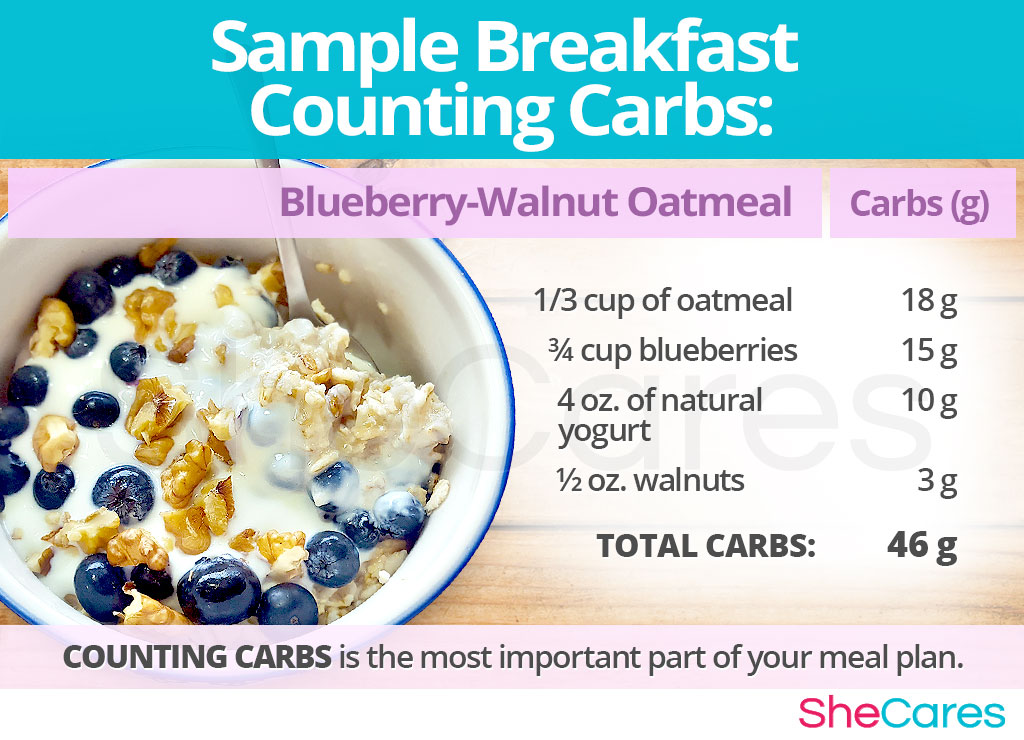

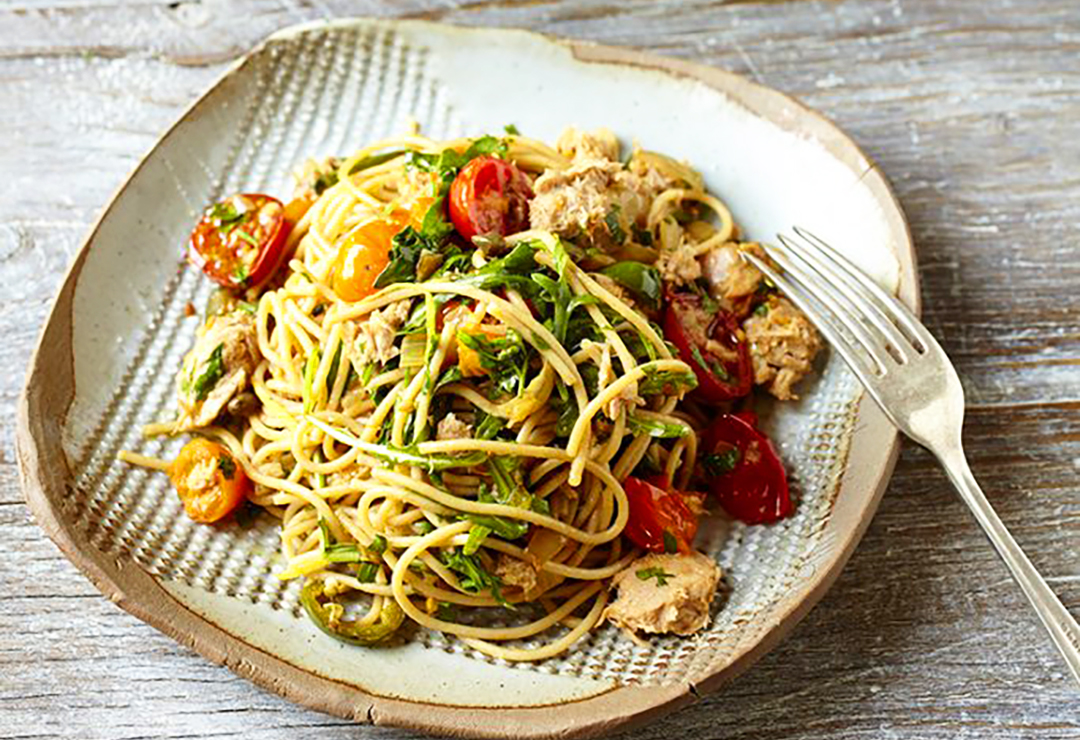
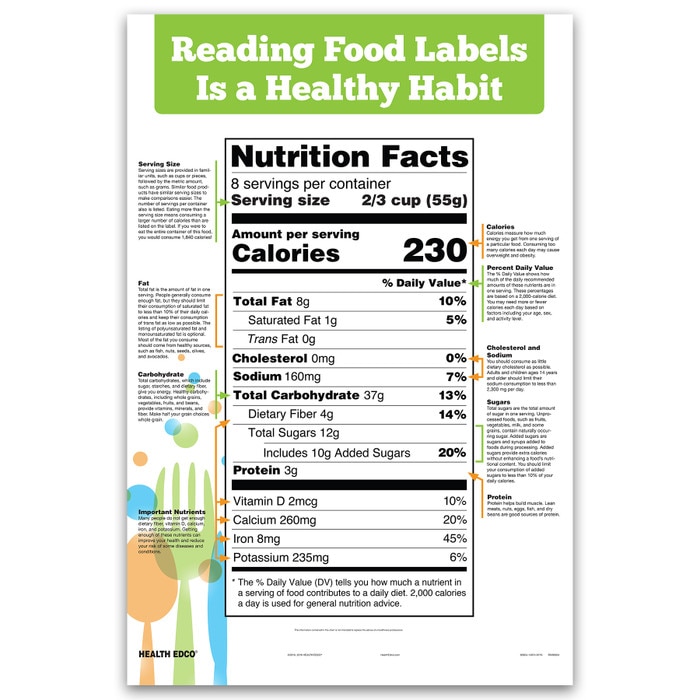


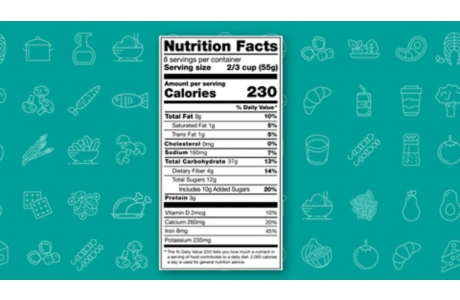
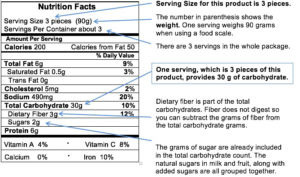


Post a Comment for "44 reading food labels diabetes"